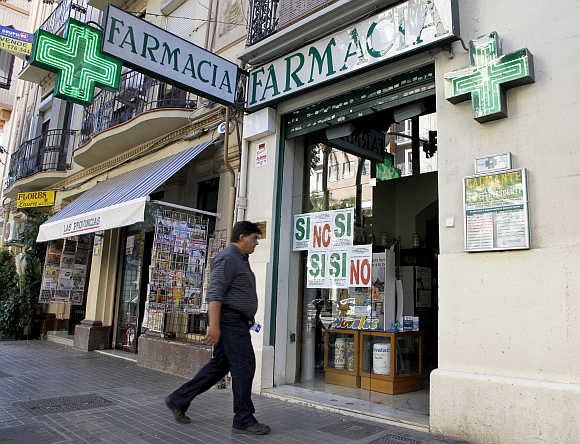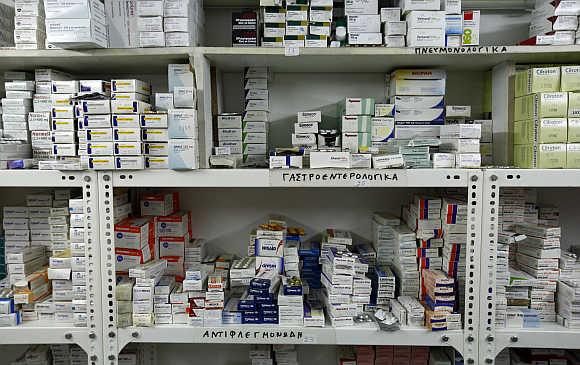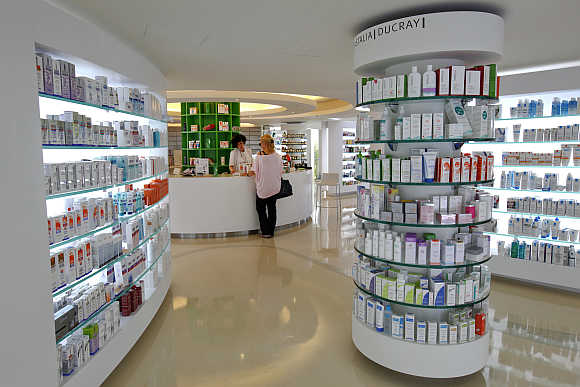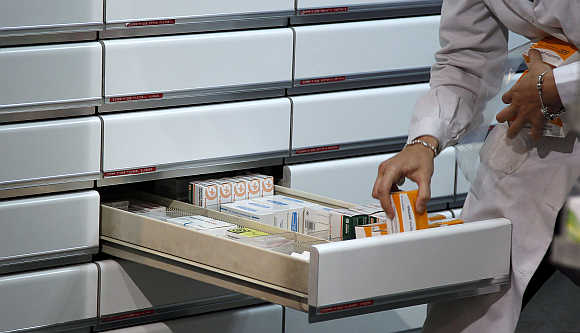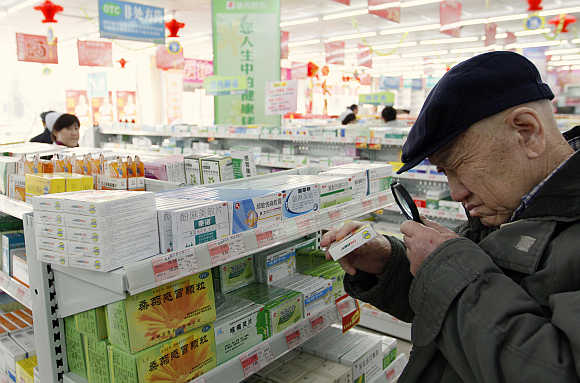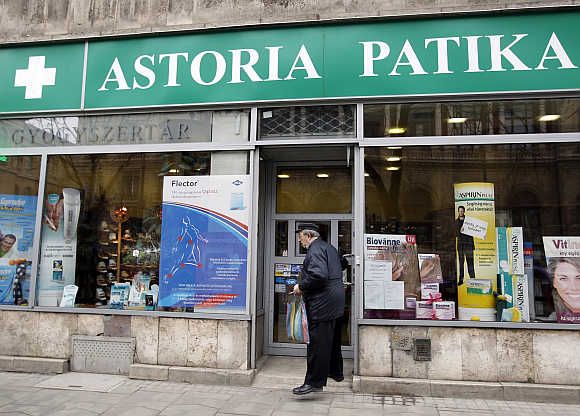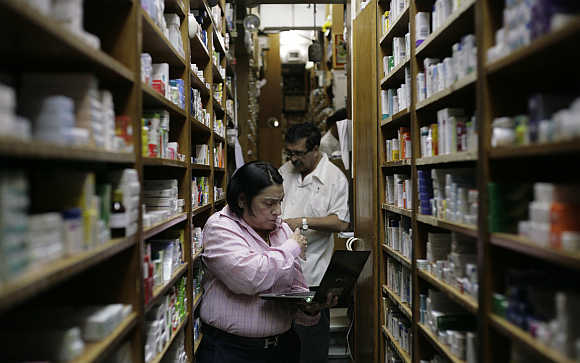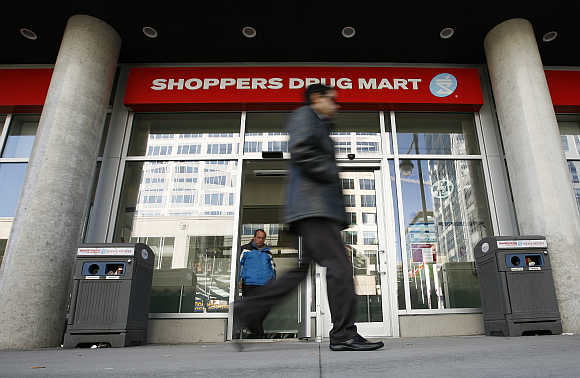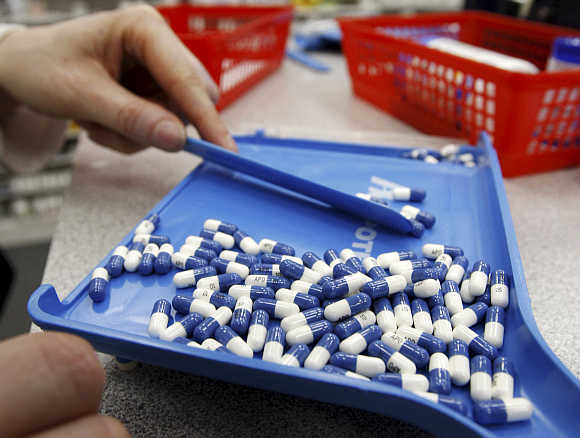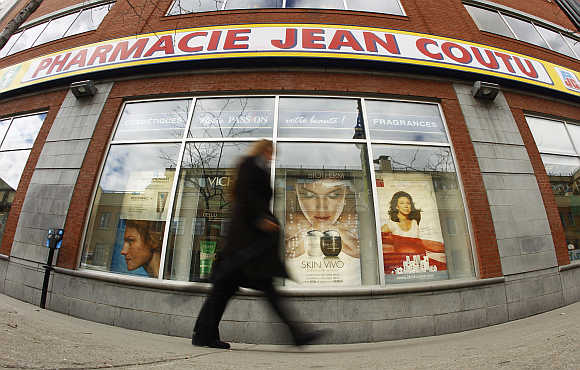 | « Back to article | Print this article |
Three Indians who revolutionised medicines in the world
Anji Reddy of Dr Reddy's Laboratories died earlier this month. Yusuf Hamied of Cipla has decided to step down as managing director of his company, though he will continue to serve on the board as non-executive chairman.
Yusuf Hamied and Anji Reddy, along with Parvinder Singh of Ranbaxy, who died in 1999, are the real pioneers of the Indian pharmaceutical industry - men of courage, conviction and vision.
They were the people who put India on the global pharmaceutical map.
Click NEXT to read more...
Three Indians who revolutionised medicines in the world
Hamied shot to global fame in 2000 when he told a European Commission medical meeting at Brussels that he could sell a three-drug anti-retroviral combination for the treatment of HIV/Aids for around $800 per patient per year.
At that time, Big Pharma (patent-holding innovative multinational corporations) was selling the combination for $12,000 per patient per year. Poor countries were big consumers of this medicine.
Click NEXT to read more...
Three Indians who revolutionised medicines in the world
The high cost had strained their medical budgets. They quickly latched on to Hamied's offer. In 2001, he twisted the knife by further dropping this price to $300 per patient per year.
He finally offered to sell the combination for as little as $140 per patient per year "subject to some conditions". The whole world applauded.
Click NEXT to read more...
Three Indians who revolutionised medicines in the world
Hamied had shown that India had the wherewithal to help poor countries, especially those in Africa, to fight the HIV/Aids menace. Hamied had inherited this fire in his belly.
His father, Khwaja Abdul Hamied, became a firebrand nationalist when he was all of 15.
Click NEXT to read more...
Three Indians who revolutionised medicines in the world
In the infamous Kanpur Mosque incident of 1913, the colonial police had shot at hundreds of people in a mosque close to where he lived.
The senior Hamied was present at the meeting and barely managed to escape with his life. This first-hand experience of imperial high-handedness filled him with great dislike for foreign rule.
Click NEXT to read more...
Three Indians who revolutionised medicines in the world
After earning his doctorate from Berlin University in 1927, he returned to his country with the dream to set up an all-Indian pharmaceutical company.
Thus was born in 1935 The Chemical, Industrial and Pharmaceutical Laboratories, which later came to be known as Cipla. He gave the company all his patents and proprietary formulae for several drugs and medicines, without charging a penny.
Click NEXT to read more...
Three Indians who revolutionised medicines in the world
For several years, Cipla found most of its plans to make medicine blocked by one patent or the other owned by overseas pharmaceutical companies.
Jawaharlal Nehru, the country's first prime minister, understood that India needed to be self-sufficient in medicine. (It was under his guidance that Hindustan Antibiotics and Indian Drugs & Pharmaceuticals were set up in the public sector to make penicillin and off-patent bulk drugs, respectively.)
Click NEXT to read more...
Three Indians who revolutionised medicines in the world
His government set up the Bakshi Tek Chand Committee in 1950 to see if the Patent Act of 1930 needed to be changed. This committee failed to come up with any concrete suggestion.
Then the R S Iyengar Committee was set up in the early 1960s, which said that though scientific effort needed protection, it couldn't be at the cost of the people. This led to a huge public debate.
Click NEXT to read more...
Three Indians who revolutionised medicines in the world
Finally, the government came out with the Patents Act, 1970, which only recognised process patents. Indians were free to make any medicine in the world, so long as they used an unpatented process.
One businessman who had lobbied hard for the change in the patent regime was Bhai Mohan Singh of Ranbaxy. His company did well in the years that followed.
Click NEXT to read more...
Three Indians who revolutionised medicines in the world
In the late 1980s, his eldest son, Parvinder Singh, realised that the party won't last forever. He was aware of the drift of the multilateral trade negotiations and knew the days of unprotected product patents were numbered.
So, in 1988, he instructed Ranbaxy to stop funding the National Council for Patent Laws, a voluntary organisation that lobbied the government to do away with all patents.
Click NEXT to read more...
Three Indians who revolutionised medicines in the world
He separated from his two brothers, Manjit and Analjit, in 1989, elevated professionals to key positions in the company and encouraged them to think of life beyond copycat drugs in India.
This was the time the overseas plans of Ranbaxy were firmed up and research was beefed up.
Click NEXT to read more...
Three Indians who revolutionised medicines in the world
Singh knew that Ranbaxy had to consolidate its position within the country before foraying abroad - it wasn't present in many therapeutic segments.
Capabilities had to be acquired through acquisitions. This would require more capital infusion into the company from the promoters.
Click NEXT to read more...
Three Indians who revolutionised medicines in the world
All-stock acquisitions could lead to some dilution in the family's stake. All this left no role for Bhai Mohan Singh in the company.
Father and son fought a bitter boardroom battle, but Singh stuck to his guns and succeeded in ousting Bhai Mohan Singh.
Click NEXT to read more...
Three Indians who revolutionised medicines in the world
That cleared the way for Ranbaxy to transform itself into an Indian multinational corporation in a few short years. Singh was diagnosed with cancer in 1997.
He knew his days were numbered, but that didn't diminish his drive.
Click NEXT to read more...
Three Indians who revolutionised medicines in the world
In June 1999, I had gone to Mohali to cover the annual general meeting of Ranbaxy's shareholders. The meeting was conducted by Singh with his trademark energy.
There was nothing to tell that the man was on his deathbed. Less than a month later, he was dead.
Click NEXT to read more...
Three Indians who revolutionised medicines in the world
Anji Reddy had started his career with state-owned Indian Drugs and Pharmaceuticals, and set up Dr Reddy's Laboratories in 1984. He made two important contributions to the Indian pharmaceutical market.
One, he took Indian capabilities in generics to the West. Two, he led the Indian effort in new drug discovery research.
Click NEXT to read more...
Three Indians who revolutionised medicines in the world
Dr Reddy's was the first company in the country to out-license a molecu#8804 it struck a deal with Novo Nordisk of Norway, the world leader in diabetes treatment.
The company subsequently out-licensed two more molecules, one to Novartis and the other to Novo Nordisk. True, there were setbacks subsequently, but that happens with all companies that dare to think big.


